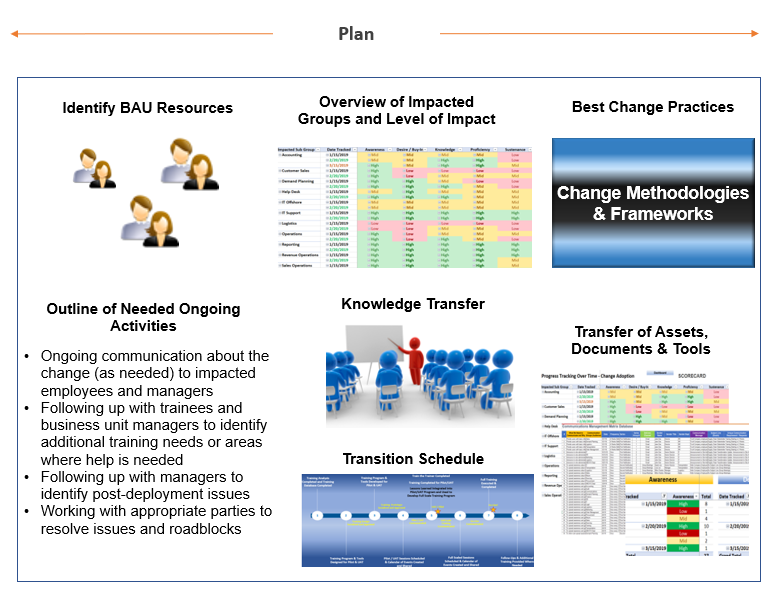CHANGE MANAGEMENT PHASE 5 (EXIT PHASE)
Change Management Team Transition
By Ogbe Airiodion.

Change Management Team Transition
At the end of any transformational change, the change management team will need to transition out of the project. Part of this transition needs to involve a transfer of responsibilities from the change management team to a designated group that will be determined by the program leads. A designated group might be a group within HR, Program Management Office, or some other group.
In the Exit phase, any temporary tools or assets needed only for the change management process, but not beyond, are dismantled or disengaged. Knowledge and assets are handed off to the permanent team(s) and the change management function for this project is formally closed out.
You can think of Phase 5 (Exit Phase) as the phase in your organizational change management framework where you are handing off and closing out.
For small projects, such a transition will be minor. For large projects, the steering committee might need to be involved as such a transition will require careful planning and management. Discussions and interviews with the primary sponsor and the steering committee will be held to:
- Inform them that plans to transfer ownership for the change from the change team to operational managers are being developed
- Determine what outstanding issues need to be addressed prior to the change management team being dissolved
- Work out an acceptable time table for the transition to occur
The primary sponsor or steering committee will ultimately make the transition decision based on how well the project is doing and what further responsibilities they envision for the change management team.
A Change Management Transition Plan will be developed as part of the transition
Value of a Change Management Transition Plan
A change management transition plan is a document that layouts the task and activities to be performed to efficiently transition the change management program from the implementation phase to the maintenance phase.
The transition plan identifies the BAU (Business-As-Usual) resources that will be responsible for managing change activities in order to sustain the change. It will also include the tools, techniques, and methodologies required for change sustenance, as well as the ongoing activities that need to be performed to ensure the change is sustained.

Here are the key deliverables during the final phase of the AGS change management process flow:
- Execute Transfer Plan / Hand Off
- Final Change Project Report
- Project Post-Mortem (Lessons Learned)
Execute Transfer Plan / Hand Off
During Phase 2 (Develop Phase), you would have created a transfer/change exit plan and you’ll be deploying that in Phase 5. It includes closing out any functions, agreements, or tools that were only needed during the duration of the transition (temporary training portal, consulting agreements, etc.) and doing a knowledge off-loading and responsibility hand-off.
Ensure the new team has access to any documents, “best practices,” online tools that may stay in use for the new process/procedure, and any other assets this permanent team may need to properly take over responsibility for the changed process or system.
Final Change Project Report
You’ll provide your final Change Project Report to project sponsors, executives, critical stakeholders, and others during Phase 5 (this is pertinent whether using a waterfall or Agile change management plan). If you have been tracking your change project KPIs during Phase 4, as noted above, then you can generate analytics from your tracking metrics to include in your final change project report.
Project Post-Mortem (Lessons Learned)
You want to ensure that in Phase 5 you generate a project post-mortem, which can be included as part of your final change management report or as a separate document. This report is applicable no matter which change management models you may be using (ADKAR Change Management Model, AGS Change Management Framework, McKinsey’s model, or another).
Your project post-mortem should incorporate lessons learned, things that could be done better, achievements that you want to repeat, etc. This type of change management document is very helpful when it’s time to plan future projects because you can build upon past knowledge and experience.
Note: Content on OCM Solution's ocmsolution.com website is protected by copyright. Should you have any questions or comments regarding this OCM Solutions page, please reach out to Ogbe Airiodion (Change Management Lead) or the OCM Solutions Team today.
